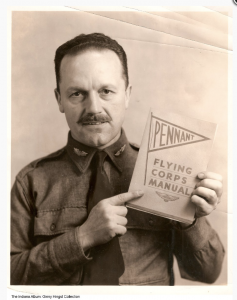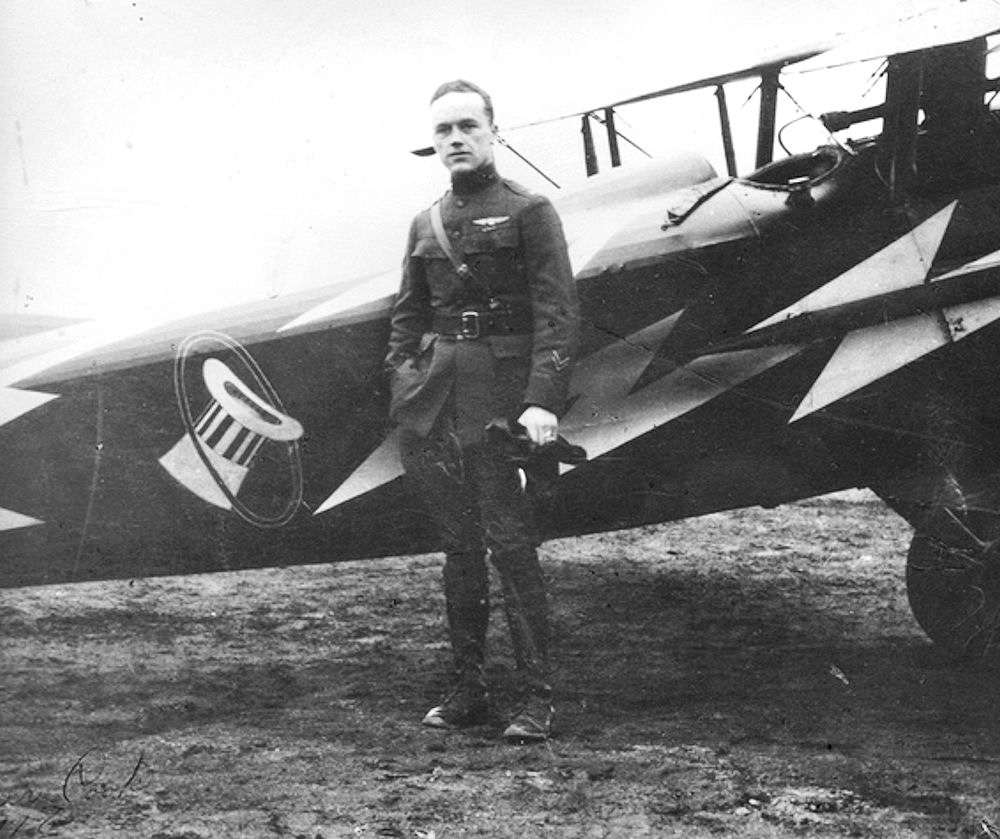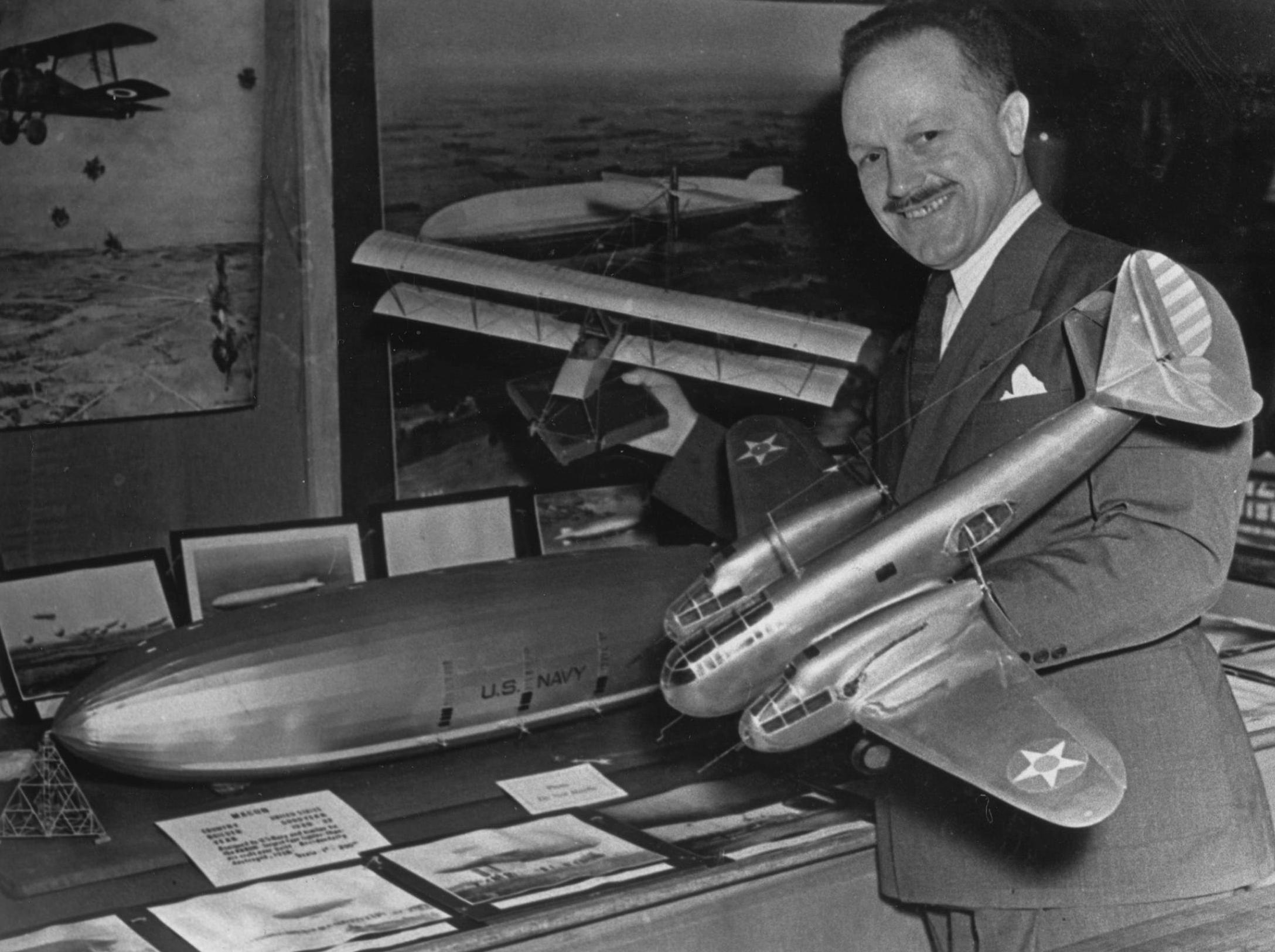
Photo info ...
Credit: The Indiana Album: Ginny Hingst Collection View Source
(June 30, 1892-Mar. 24, 1943). A native of Wilkinson, Indiana, Cook launched his celebrated career by joining Captain Edward Rickenbacker’s famous “Hat in the Ring” squadron after taking flight training in France in 1917. As a member of this World War I fighter squadron, Cook distinguished himself as an ace pilot, downing seven enemy aircraft. Promoted to flight commander of Rickenbacker’s 94th Aero Squadron, he was one of eight aces in the unit. He received the Distinguished Service Cross with oak leaf cluster for bravery under fire in engagements near Bois-de-Dole, France, on August 1, 1918, and Crépion, France, on October 30, 1918.

In the years following the war. Cook continued his avid interest in by becoming a pioneer of airmail delivery. He came to Indianapolis in the mid-1920s, serving for a time as an instructor with the 38th Division air corps. Although he resigned from the regular army in 1928, he retained his reserve commission and continued to advise the 38th Division and the Indiana Air Guard.
In the late 1920s, Cook joined the managerial staff of Curtiss Flying Service, based in Indianapolis. He was primarily responsible for the selection of Indianapolis as a stop on the New York-St. Louis airmail route in 1934.

He was actively involved in civic affairs, serving as a prominent member of the Indianapolis aviation committee. In this capacity, he helped to select the site of the city’s airport, which was christened “Weir Cook” in 1944 in his memory. Cook rejoined the Army during World War II. He was promoted to colonel on June 22, 1942, and was killed the next year in a plane crash in New Caledonia.
The terminal at the new , which opened in 2008, also was named in his honor, continuing his legacy.

Help improve this entry
Contribute information, offer corrections, suggest images.
You can also recommend new entries related to this topic.